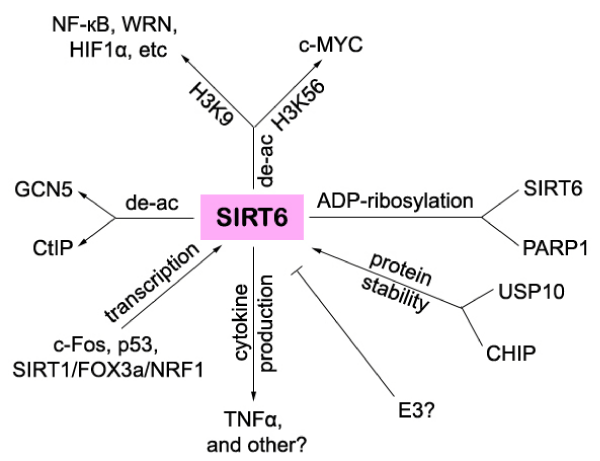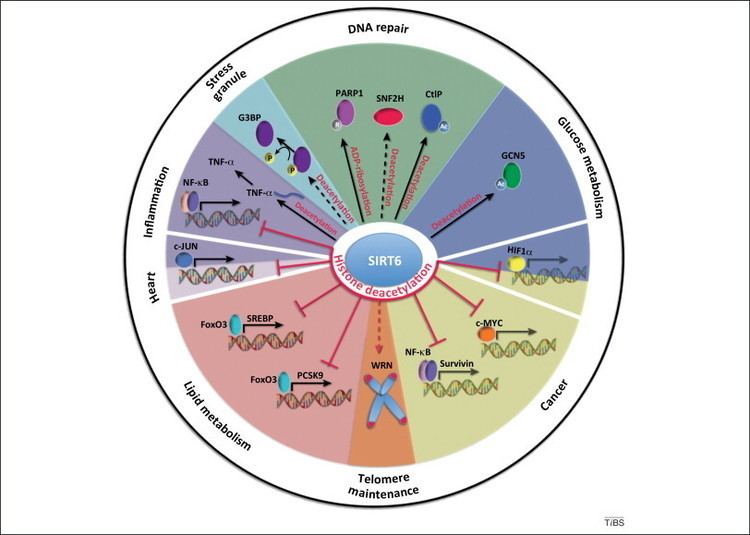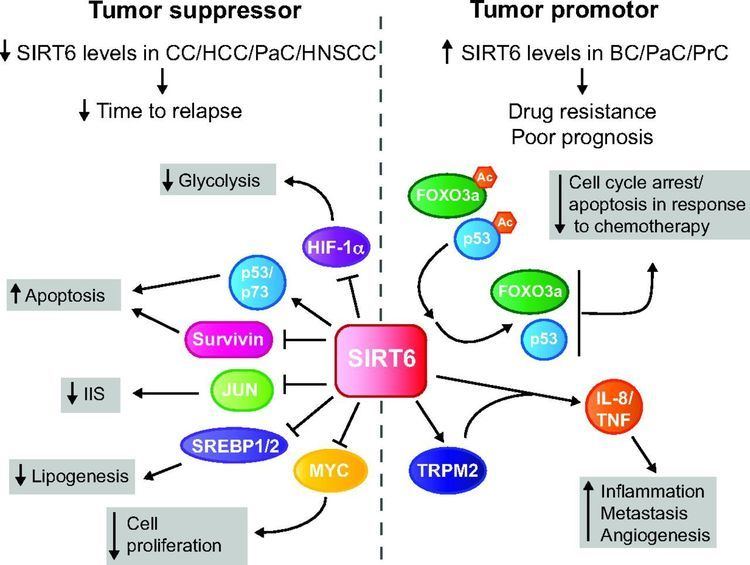Species Human Entrez 51548 | Human Mouse Ensembl ENSG00000077463 | |
 | ||
Aliases SIRT6, SIR2L6, sirtuin 6 External IDs MGI: 1354161 HomoloGene: 6924 GeneCards: SIRT6 | ||
Sirtuin-6 (SIRT6) is a stress responsive protein deacetylase and mono-ADP ribosyltransferase enzyme encoded by the SIRT6 gene. SIRT6 functions in multiple molecular pathways related to aging, including DNA repair, telomere maintenance, glycolysis and inflammation.
Contents

Function
Studies in mice have revealed that Sirt6 is essential for post-natal development and survival. Sirt6 knock-out mice, in which the gene encoding Sirt6 has been disrupted, exhibit a severe progeria, or premature aging syndrome, characterized by spinal curvature, greying of the fur, lymphopenia and low levels of blood glucose. The lifespan of Sirt6 knock-out mice is typically one to three months, dependent upon the strain in which the Sirt6 gene has been deleted. By contrast, wild type mice, which retain expression of Sirt6, exhibit a maximum lifespan of two to four years.
Mice which have been genetically engineered to overexpress, or produce more, Sirt6 protein exhibit an extended maximum lifespan. This lifespan extension, of about 15-16 percent, is observed only in male mice. Reciprocal regulation between SIRT6 and miRNA-122 controls liver metabolism and Predicts Hepatocarcinoma prognosis by study of Haim Cohen's lab with mice. they found that SIRT6 and miR-122 negatively regulate each other's expression. The study found SIRT6 was shown to act as a tumor suppressor that blocks the Warburg effect in cancer cells.
Clinical relevance

The medical and therapeutic relevance of SIRT6 in humans remains unclear. SIRT6 may be an attractive drug target for pharmocological activation in several diseases. Because SIRT6 attenuates glycolysis and inflammation, the gene is of medical interest in the context of several diseases, including diabetes and arthritis. Additionally, SIRT6 may be relevant in the context of cancer. Several studies have indicated that SIRT6 is selectively inactivated during oncogenesis in a variety of tumor types; a separate study demonstrated that SIRT6 overexpression was selectively cytotoxic to cancer cells.
Activators
Sirt6 deacetylation activity can be stimulated by high concentrations (several hundred micromolar) of fatty acids, and more potently by a first series of synthetic activators based on a pyrrolo[1,2-a]quinoxaline scaffold. Crystal structures of Sirt6/activator complexes show that the compounds exploit a Sirt6-specific pocket in the enzyme's substrate acyl binding channel.
